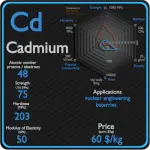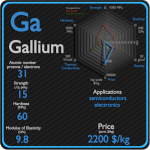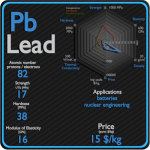This article contains comparison of key thermal and atomic properties of arsenic and cadmium, two comparable chemical elements from the periodic table. It also contains basic descriptions and applications of both elements. Arsenic vs Cadmium.
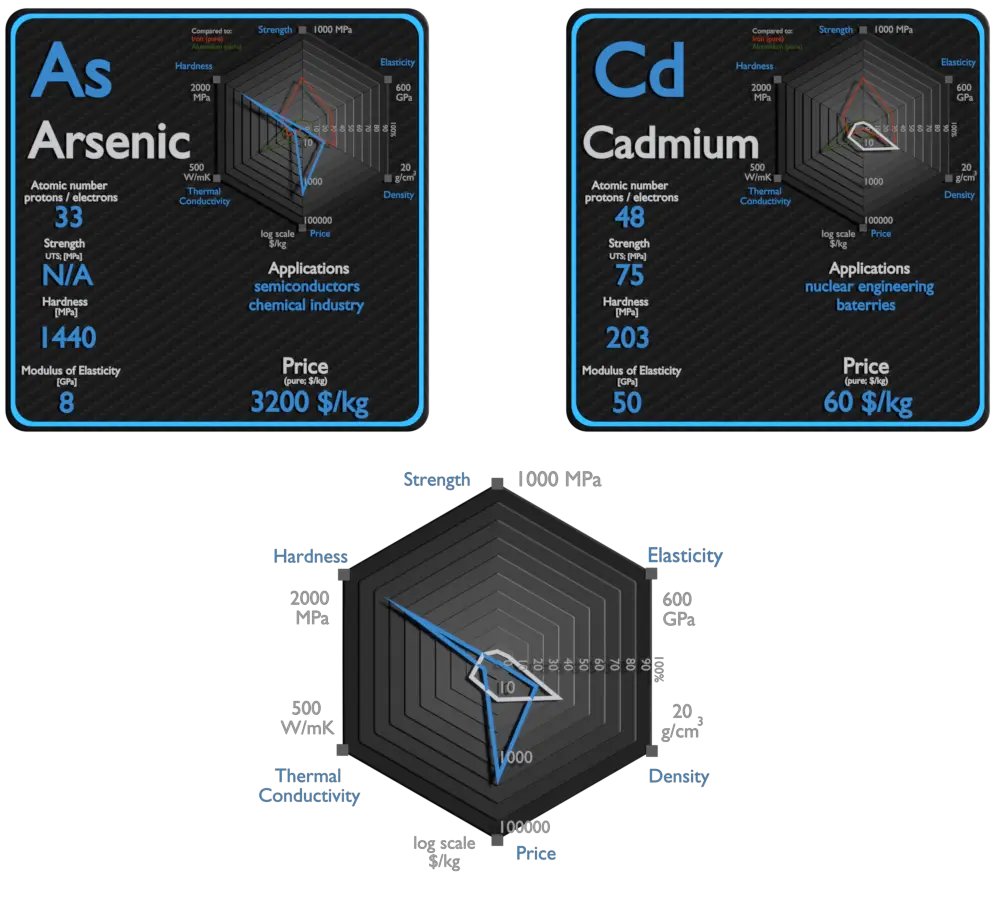
Arsenic and Cadmium – About Elements
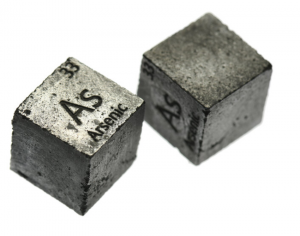
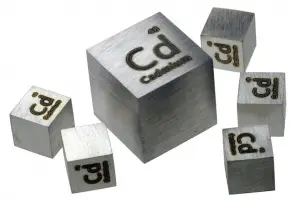
Source: www.luciteria.com
Arsenic and Cadmium – Applications
Arsenic
Arsenic is used as a doping agent in semiconductors (gallium arsenide) for solid-state devices. It is also used in bronzing, pyrotechnics and for hardening shot. Arsenic compounds can be used to make special glass and preserve wood.
Cadmium
Cadmium is primarily consumed for the production of rechargeable nickel cadmium batteries. In 2009, 86% of cadmium was used in batteries, predominantly in rechargeable nickel-cadmium batteries. Other end uses include pigments, coatings and plating, and as stabilizers for plastics. Solar cell manufacturing may become another significant market for cadmium in the future. In nuclear industry cadmium is commonly used as a thermal neutron absorber due to very high neutron absorption cross-section of 113Cd. 113Cd has specific absorption cross-section.
Arsenic and Cadmium – Comparison in Table
| Element | Arsenic | Cadmium |
| Density | 5.727 g/cm3 | 8.65 g/cm3 |
| Ultimate Tensile Strength | N/A | 75 MPa |
| Yield Strength | N/A | N/A |
| Young’s Modulus of Elasticity | 8 GPa | 50 GPa |
| Mohs Scale | 3.5 | 2 |
| Brinell Hardness | 1440 MPa | 203 MPa |
| Vickers Hardness | N/A | N/A |
| Melting Point | 817 °C | 321.07 °C |
| Boiling Point | 614 °C | 767 °C |
| Thermal Conductivity | 50 W/mK | 97 W/mK |
| Thermal Expansion Coefficient | 5.6 µm/mK | 30.8 µm/mK |
| Specific Heat | 0.33 J/g K | 0.23 J/g K |
| Heat of Fusion | N/A | 6.192 kJ/mol |
| Heat of Vaporization | 34.76 kJ/mol | 99.57 kJ/mol |
